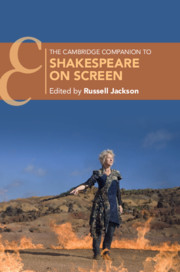Book contents
- The Cambridge Companion to Shakespeare on Screen
- Cambridge Companions to Literature
- The Cambridge Companion to Shakespeare on Screen
- Copyright page
- Contents
- Illustrations
- Contributors
- Preface
- Note on References
- Introduction
- Part I Adaptation and Its Contexts
- Part II Genres and Plays
- Part III Critical Issues
- Part IV Directors
- Further Reading
- Filmography
- Index
- Cambridge Companions To …
- References
Further Reading
Published online by Cambridge University Press: 11 December 2020
- The Cambridge Companion to Shakespeare on Screen
- Cambridge Companions to Literature
- The Cambridge Companion to Shakespeare on Screen
- Copyright page
- Contents
- Illustrations
- Contributors
- Preface
- Note on References
- Introduction
- Part I Adaptation and Its Contexts
- Part II Genres and Plays
- Part III Critical Issues
- Part IV Directors
- Further Reading
- Filmography
- Index
- Cambridge Companions To …
- References
Summary

- Type
- Chapter
- Information
- The Cambridge Companion to Shakespeare on Screen , pp. 249 - 263Publisher: Cambridge University PressPrint publication year: 2020



